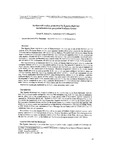| dc.contributor.author | Georgi, Neratzia Julia | |
| dc.contributor.author | Beltsou, A. | |
| dc.contributor.author | Stathakopoulos, Y. | |
| dc.contributor.author | Efthimiou, G. | |
| dc.date.accessioned | 2016-04-20T12:25:21Z | |
| dc.date.available | 2016-04-20T12:25:21Z | |
| dc.date.issued | 2001 | |
| dc.identifier.isbn | 960-869-47-4-4 | |
| dc.identifier.uri | http://hdl.handle.net/11728/7537 | |
| dc.description.abstract | The Egnastia Road constitutes a part of Transpeuropean Network and is one of the fourteen priority projects of the European Union. It is the most important modern infrastructure project for the development of Greece and its communication, with Europe and the Balkans. The northern part of Greece where Egnatia Road is located, has an extensive range of landscape typea and natural vegetation, local climate, geology and soils aspects, Attitude also varies considerably from one section of the road to the another. As a result upland landscapes in particular, are becoming more scarred while the road development increases. Due to the complex of nature of this environment, the development and the restoration of road is a high challenging task. | en_UK |
| dc.language.iso | en | en_UK |
| dc.relation.ispartofseries | Proceedings International Conference, Forest Research: a challenge for an integrated European approach; | |
| dc.rights.uri | http://creativecommons.org/licenses/by-nc-nd/4.0/ | en_UK |
| dc.subject | landscape | en_UK |
| dc.subject | hydroseeding methods | en_UK |
| dc.subject | slope protection | en_UK |
| dc.subject | native plants | en_UK |
| dc.title | Surface soil Erosion Protection for Infrastructure Projects in Greece | en_UK |
| dc.type | Working Paper | en_UK |


